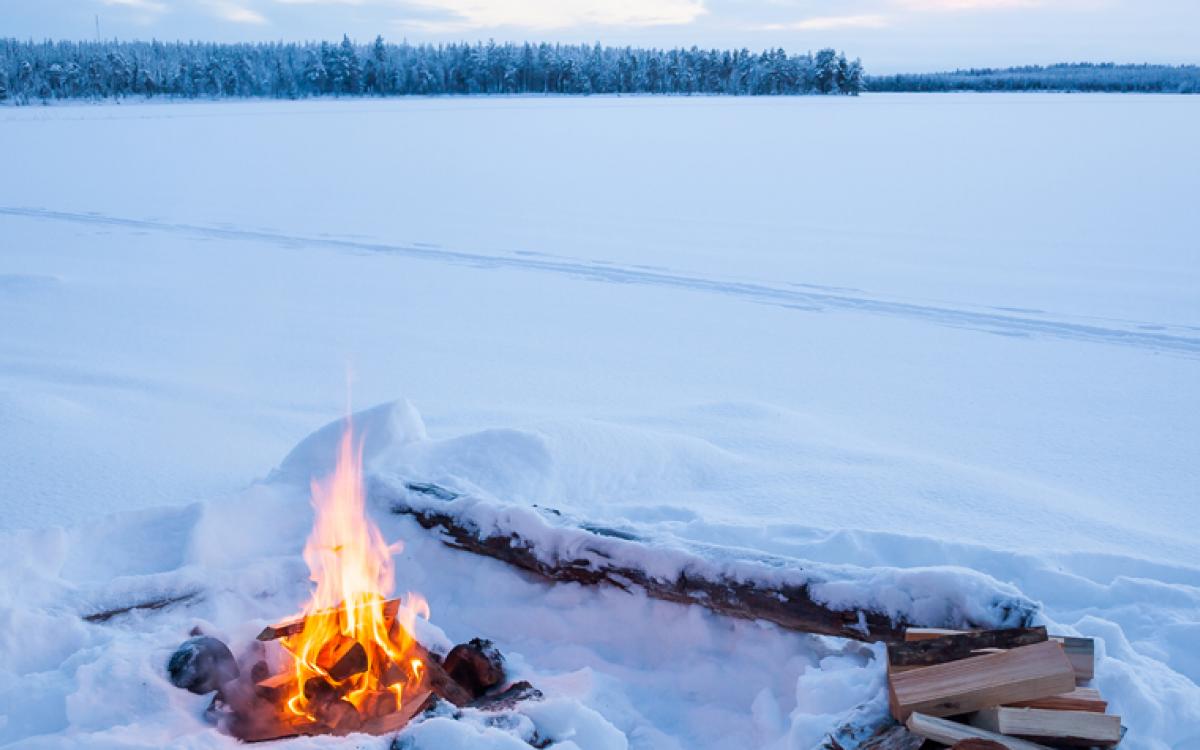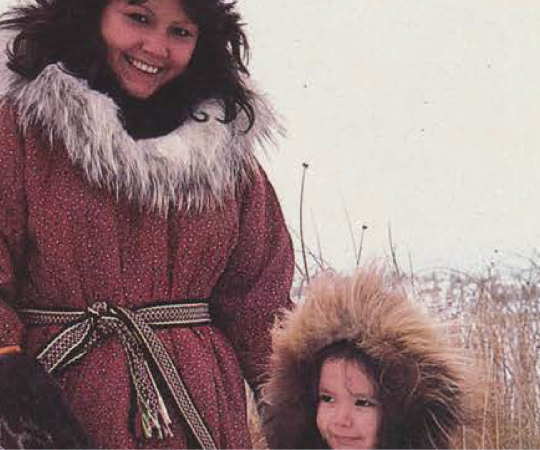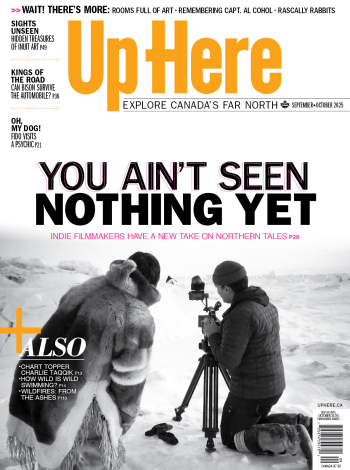You’re miles away from any help when your canoe starts leaking, your snowmobile breaks down, or maybe you’re just lost. Until you get rescued or figure out a way home, your top priority is to stay warm. Here’s what to do:
Pick your fire pit:
“Find yourself a cozy spot,” says Norm Beebe, from 1st Canadian Ranger Patrol Group based in Carcross, Yukon. “You don’t want to do this in the middle of a [frozen] lake where there’s a 30- to 40-mile wind.” Try to find a spot on bare rock or mineral soil, downwind from any trees.
Gather all the material:
Make sure you have everything you need before lighting your fire, says Cathy Allooloo, head instructor and co-owner of the Yellowknife-based NARWAL Northern Adventures. You’ll need tinder (no, not the dating app), kindling, and wood of various sizes. Kindling and wood you can gather on the land if you’re south of the treeline, but it’s a good idea to bring tinder with you. For that, you can use birch bark (it’s smoky, cautions Beebe: “you’ll carry the smell with you through your lifetime”), cattail fluff, Arctic cotton heads, or dryer lint stored in a waterproof container.
For kindling, you can gather dead spruce branches from the bottom of a spruce tree. Get a good bundle, break them each into forearm-length pieces, and gently lay them on the tinder once it’s been lit. Beebe also recommends witch’s hair—a long, beard-like lichen that grows on older trees.
When you hear the flames making a crackling sound, you can start adding wood. Start with small pieces, placing them over the highest flame, and as the flames grow, add the larger pieces of wood. Avoid smothering the fire, and let it grow; big flames will help you get found.
[view:image_galleries=block_1=1912]
Don’t let snow stop you:
If there’s snow on the ground, try brushing it away to bare ground. “You also have to be careful to knock as much snow as possible off of your wood,” says Allooloo.
If the trees are covered in hoarfrost—a layer of ice crystals that make the wood too moist to catch flame—don’t panic. “You start looking for dry wood on the inside of the dead trees,” says Beebe. “You start cutting the outside off and use splinters of wood for kindling.”
Build another fire:
Why would you need two fires? “One to warm your front, one for your back,” says Allooloo. “Allow one to go out, then sweep away the coals and use the warmed ground as your sleeping spot.”
Call for help:
Presumably, you’ve told someone where you’re going, and when you’re not back when expected, they’ll have called a search and rescue team to look for you. Help them find you by cutting down green spruce boughs to toss on the fire. This will raise a thick smoke plume that can be seen from a distance.
If you’re north of the treeline:
“First thing we do up here is build a shelter,” says Titus Allooloo, a Canadian Ranger based in Pond Inlet, and a founding partner at NARWAL. It’s not tree country, he says, so you only really make fires to cook food, not to stay warm. In the summer, you can build a tent. In the winter, an iglu, snow hut, or simply digging down through a couple of feet of insulating snow will keep you warmer—which, at 40-below, makes a huge
difference. Inside the iglu, you can use a Coleman stove. If you really want to be traditional, you light a seal oil lamp, or qulliq, for warmth. To cook, you can build a fire outside the shelter by lighting heather, or if it’s summer, you use driftwood. Just don’t count on big flames: “Up here, you can't make a big fire,” says Titus. Still, don’t leave home without any matches or a lighter—just in case.
Where do you get the spark?
Lighters: Most Northerners will head out on the land with a lighter in their pocket, says Cathy Allooloo. But try flicking a lighter in the cold winter air, and you’ll likely end up with no spark and a brutal frostbite blister on your thumb instead. “I prefer to carry the torch-type lighters,” says Allooloo. “They’re refillable and easy to depress, holding a flame even in a wind storm.” They're best stored inside your coat where they'll stay warm and dry.
Matches: Allooloo recommends two brands of matches: Redbird (“The ones in the big box, not the little box,” she says) and Coghlan's Storm Matches. Both are sturdy matches that will hold up well in the Northern elements; many other varieties that claim to be wind- and waterproof are too flimsy to work well.
Flint: Say you did bring matches or a lighter, but they got wet or just won’t light. You can still use flint and steel to ignite a spark, or connect the two terminals on a battery with a piece of steel wool or foil gum wrapper. Don’t attempt that for the first time when you’re out on the land and out of options, though; check out our how-to video below, practice the technique outdoors, and you’ll be ready for anything.










